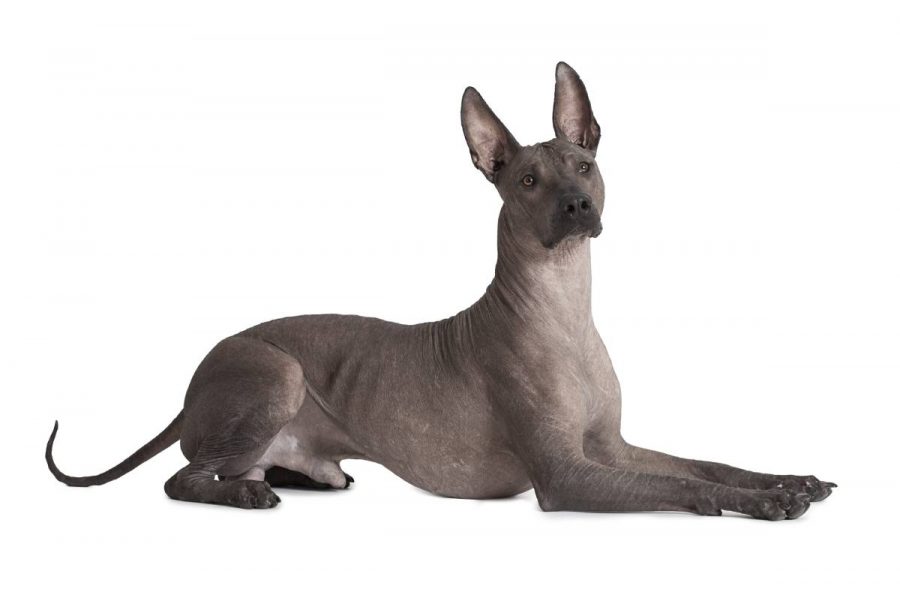The true name of the breed is Xoloitzcuintle, but it is also known as the Mexican hairless dog or Mexican naked dog. It is a breed that indicates a primitive dog, so much so that the Xoloitzcuintle is referred to as one of the oldest breeds in the world. The Mexican hairless dog was in fact regarded as a sacred animal, earning it the nickname ‘God’s envoy’, who played a role in guiding the souls of the dead. The indigenous people also believed that the Xolo had healing powers, so much so that after four days of close contact with the dog, the sick person’s illness could be absorbed by it. There are currently three types of Mexican dog, the small dog, the medium dog and the standard dog.
Characteristics
The Xoloitzcuintle is characterised as a primitive hairless dog: also known as the naked dog, and has a life expectancy of around 12-15 years. The Xoloitzcuintle is characterised by its almost total lack of hair, so much so that when stroked the skin appears completely smooth. The Xoloitzcuintle is also characterised by its elegant bearing and its long ears that resemble those of a bat. However, the absence of hair should not be an excuse for not grooming the Mexican dog. It should be washed with products with a neutral pH, better still if accompanied by a massage with an abrasive sponge to remove dead skin. It would be ideal to apply moisturising cream from head to tail, especially in the summer when sunscreen should be applied to prevent the dog from getting burnt.

Character
The Mexican hairless dog is characterised by its elegance and nobility of spirit. It may appear haughty and aloof, but it is a very self-confident dog, as can be seen from its gait. It is a dog characterised by its lively and very intelligent expression, it is reserved and cheerful, protective and lively. It is usually indifferent to strangers, but will become attached to its family members, even ready to protect them if necessary.
It is generally sociable with its peers and has no problem accepting other animals, but these are character nuances that may vary, depending on the subject.
